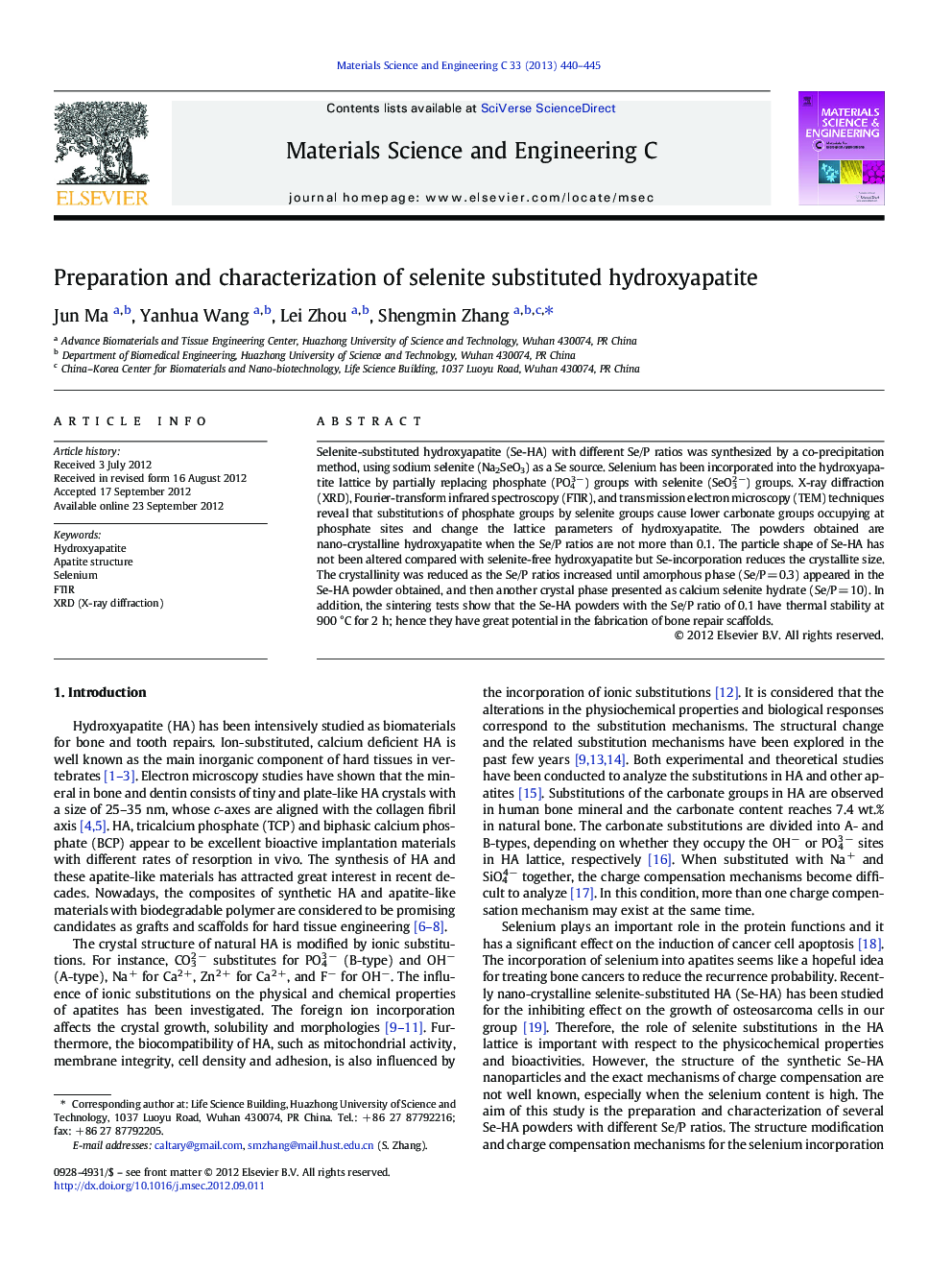| Article ID | Journal | Published Year | Pages | File Type |
|---|---|---|---|---|
| 1429093 | Materials Science and Engineering: C | 2013 | 6 Pages |
Selenite-substituted hydroxyapatite (Se-HA) with different Se/P ratios was synthesized by a co-precipitation method, using sodium selenite (Na2SeO3) as a Se source. Selenium has been incorporated into the hydroxyapatite lattice by partially replacing phosphate (PO43 −) groups with selenite (SeO32 −) groups. X-ray diffraction (XRD), Fourier-transform infrared spectroscopy (FTIR), and transmission electron microscopy (TEM) techniques reveal that substitutions of phosphate groups by selenite groups cause lower carbonate groups occupying at phosphate sites and change the lattice parameters of hydroxyapatite. The powders obtained are nano-crystalline hydroxyapatite when the Se/P ratios are not more than 0.1. The particle shape of Se-HA has not been altered compared with selenite-free hydroxyapatite but Se-incorporation reduces the crystallite size. The crystallinity was reduced as the Se/P ratios increased until amorphous phase (Se/P = 0.3) appeared in the Se-HA powder obtained, and then another crystal phase presented as calcium selenite hydrate (Se/P = 10). In addition, the sintering tests show that the Se-HA powders with the Se/P ratio of 0.1 have thermal stability at 900 °C for 2 h; hence they have great potential in the fabrication of bone repair scaffolds.
► We investigate the Se/P ratio for the synthesis of selenium substituted HA. ► Nano-crystalline HA structure is remained when Se/P ratio is below 0.1. ► Calcium selenite hydrate forms when Se/P ratio is beyond 10. ► Selenite substituted HA powders (Se/P < 0.1) are stable at 900 °C for 2 h.
